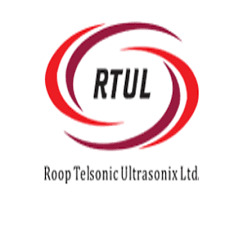Don't wanna be here? Send us removal request.
Text
Ultrasonics is useful in a various wide range of industries with unlimited applications. Ultrasonic equipment can include:
Ø Ultrasonic Welding
Ø Ultrasonic Cleaning
Ø Ultrasonic Sieving
Ø Ultrasonic Cut & Seal
Ø Ultrasonic Testing

Ultrasonic Welding:
As a joining process for industrial thermoplastics, the ultrasonic method is very well proven in practice in various industries. Particularly in the production of mass- produced parts, the process offers definite advantage over previous methods such as for instance high strength, clean weld seams, fast processing times, extremely low rejection rates and low energy consumption.
In addition to its main application which is welding of moulded thermoplastic parts, this technique can be used successfully for riveting, forming, stacking as well as embedding of metal parts into thermoplastic materials.
A standard ultrasonic welding unit comprises the following main components:
Electronic Ultrasonic Generator, Converter, Booster, Sonotrode, Pneumatic Press and Control Unit.
The Ultaronic Generator is the heart of every ultrasonic welding system, its function being to supply the converter with an alternating current of a given ultrasonic frequency. This is then converted by the transducer into mechanical/ ultrasonic vibrations which are finally transmitted via, the booster and sonotrode to the part being welded.
Ultrasonic Cleaning:
Ultrasonic cleaning is a process that uses ultrasound (usually from 20–40 kHz) to agitate a fluid. The ultrasound can be used with just water, but use of a solvent appropriate for the object to be cleaned and the type of soiling present enhances the effect.
Ultrasonic cleaners are used to clean many different types of objects, including jewelry, scientific samples, lenses and other optical parts, watches, dental and surgical instruments, tools, coins, fountain pens, golf clubs, fishing reels, window blinds, firearm components, car fuel injectors, musical instruments, gramophone records, industrial machine parts and electronic equipment. They are used in many jewelry workshops, watchmakers' establishments, electronic repair workshops and scientific labs.
Ultrasonic Sieving:
In addition to the conventional method, ultrasonic supported sieving technology evenly transmits as oscillating motion, in the micron range, onto the screen surface reducing the friction between the sieve mesh and bulk material. This Enhances the throughput and quality of your present vibratory screener, sieve or sifter.
Ultrasonic powder sieving system can be applied to your existing sieve, screener, or sifter to eliminate blockage or screening of wire mesh while sieving powder products such as powdered metals, ceramics, powder coatings, pharmaceuticals, or food additives.
Depending upon the particle structure this reduction can result in a significant increase in throughput volume. Screen blinding and clogging are also reduced due to the cleaning effect the oscillating motion has on the sieve mesh. A consistent efficient production process is guaranteed while simultaneously reducing the related maintenance costs to a minimum.
Ultrasonic Textile (Cut & Seal):
Ultrasonic energy has found extensive use in cutting of textiles, woven sacks/plastic etc and their downstream processing. Many of these uses are based on the ability to use ultrasonic energy to induce heat and pressure by vibratory action. The use of ultrasonic Cut n Seal technology makes manufacturing of non-wovens and wovens, economical and process-safe and our customers from the medical, packaging, fabrics and engineering industry value it tremendously.
The principal advantage of the ultrasonic seal and cut method is that the edge of the textile material, while being cut simultaneously, is sealed by the dissipation of ultrasonic energy, thereby preventing the presence of a frayed edge or the unraveling of threads, no discoloration of fabric and very strong, uniform, smooth, clean and long lasting edges without over thickness with low energy consumption.
Ultrasonic Testing:
Ultrasonic technique uses transmission of high frequency sound waves into a material to detect flawsor to find out changes in different material properties. 1-15MHz frequency is generally used for specialized application and frequencies upto 100-150 MHz are also necessary. Mostly piezoelectric transducer is used in such application. Ultrasonic waves are created by using excitation of piezoelectric transducer with high voltage and narrow pulse. Ultrasonic flaw detector which is mostly used instrument for non destructive techniques of various kinds of materials.The pulse generator is the most critical part in all ultrasonic systems. There are different kinds of techniques used for exciting ultrasonic transducer.Ultrasonic testing is a very versatile inspection method and inspections can be accomplished in a number of different ways. Pulse echo is the most commonly used ultrasonic testing
technique , in this technique sound is introduced into a test object and echoes (reflection) are returned to a receiver from internal flaws or from the object’s geometrical surfaces.The Ultrasonic based Non Destructive Testing (NDT) is a widely used and well established technique for inspecting, testing, or evaluating of materials, components or assemblies with features of non-invasiveness, low-cost and real time capability.
RTUL Brief Bio: RTUL is a leader in design, development, manufacture and marketing of a wide range of ultrasonic machines for welding, cleaning, sieving, non-destructive testing, sonochemistry and specialized applications. The company has established itself as a high-tech firm, specializing in production, research and developments in the area of ultrasonic.
1 note
·
View note